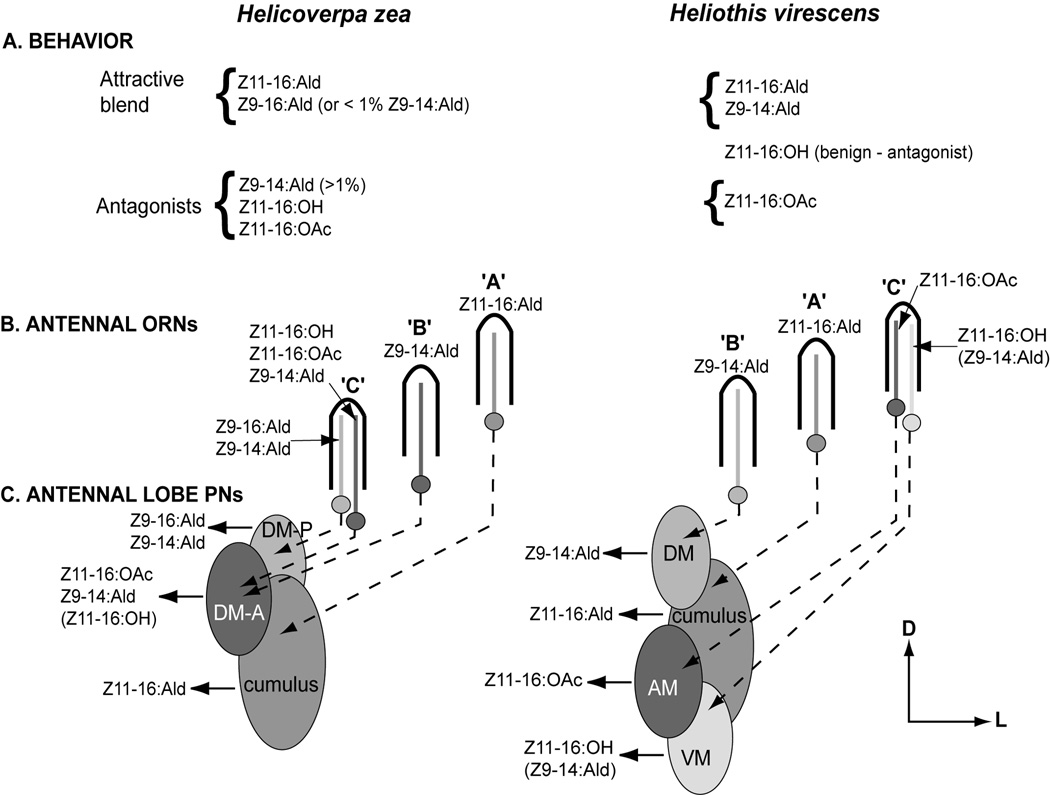Figure 1.
Schematic of pheromone-mediated behavior and olfactory pathways of male Helicoverpa zea and Heliothis virescens modified from Vickers et al. (2003) to include central olfactory projections neurons (PNs). A. Attractive pheromone mixtures for the two species differ by a single secondary component, Z9-16:Ald for H. zea and Z9-14:Ald for H. virescens. Several additional compounds when singly added to an attractive blend antagonize upwind flight responses by males. B. Antennal olfactory receptor neurons (ORNs) are housed in sensilla along the antenna. Three different sensilla populations (A, B, and C types) have been characterized on the antennae of H. zea and H. virescens. These sensilla house ORNs with the odorant specificities indicated. The axonal projections of these different ORNs are not entirely understood but known and anticipated targets in the sexually-dimorphic male macroglomerular complex (MGC) are indicated. C. The MGCs of both species are dominated by a large glomerulus, the cumulus, with 2 (H. zea) or 3 (H. virescens) smaller, satellite glomeruli. These additional glomeruli were named according to their anatomical position relative to the cumulus (DM-A: dorso-medial anterior; DM-P: dorso-medial posterior; DM: dorso-medial; AM: antero-medial; VM: ventro-medial). Central PNs with dendritic arbors restricted to individual glomeruli (i.e. uniglomerular) have previously been shown to respond specifically to the odorants indicated (Christensen et al., 1991, 1995; Vickers et al., 1998) with the following exceptions: 1. PNs in the H. zea DM-A glomerulus are expected to respond to Z11-16:OH in addition to Z11-16:OAc and Z9-14:Ald; 2. PNs tuned to Z11-16:OH and Z9-14:Ald arborize in the VM glomerulus of H. virescens (Kleineidam et al., in prep.; Vickers, unpublished observations). The specificities of central PNs closely matched those of peripheral ORNs (H. zea: Cossé et al., 1998; H. virescens: Baker et al., 2004). D, dorsal; L, lateral.

